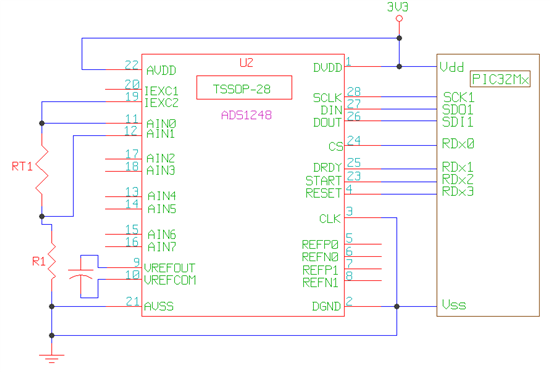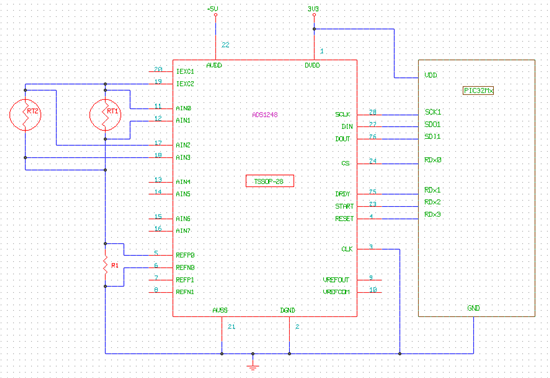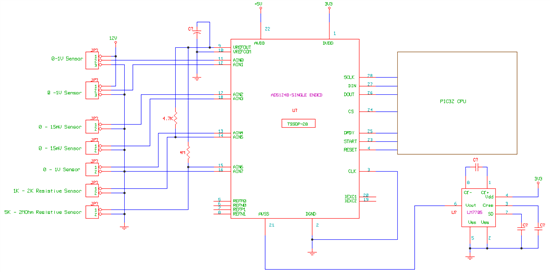Hi there,
I have just been introduced to the ADS1248 and intend to use it to monitor four 4 wire PT100 in full differential mode. I intend to use the one IDAC to excite 2 PT100s.
I also intend to use the internal oscillator and internal voltage reference hence will not use REFP0,REFN0, REFP1 and REFN1.
Please advice if this setup will work.
I will be using a PIC32Mx CPU on the SPI. See my proposed schematic below.
-
Ask a related question
What is a related question?A related question is a question created from another question. When the related question is created, it will be automatically linked to the original question.






